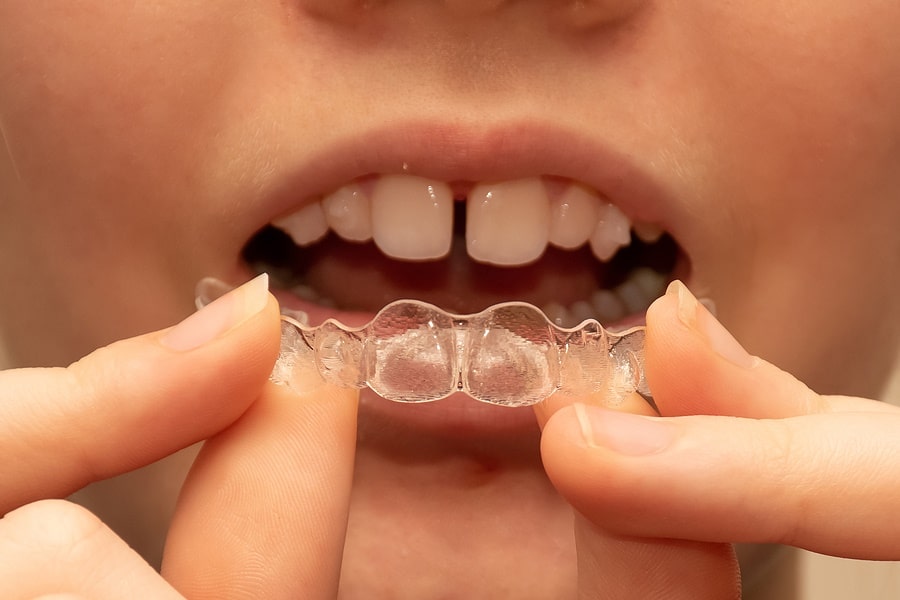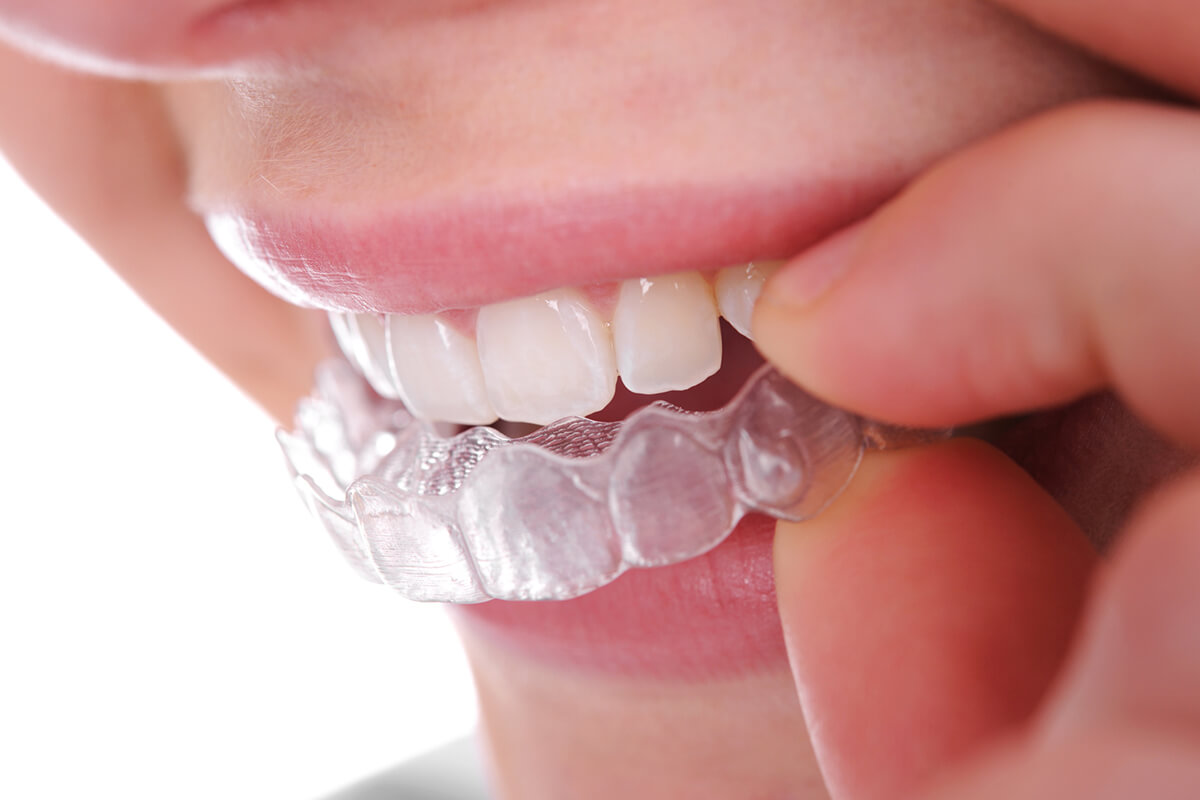Discover the Conveniences of Invisalign for a Perfect Smile Change
Wiki Article
Invisalign vs. Conventional Braces: Which Alternative Is Right for You?
When thinking about orthodontic treatment, the choice between Invisalign and typical dental braces presents several crucial variables that merit mindful assessment. Invisalign uses a discreet option with detachable aligners, while traditional braces supply a more visible yet effective option for severe misalignment.Overview of Therapy Choices

On the other hand, standard dental braces contain metal brackets and cords that are bonded to the teeth. This technique applies continual stress over time to accomplish positioning. While reliable for complex orthodontic concerns, typical braces require normal visits for adjustments and can pose difficulties in preserving dental health due to the difficulty of cleansing around cords and braces.
Both options have their values, and the choice commonly rests on specific dental conditions, lifestyle preferences, and patient conformity. Inevitably, speaking with an orthodontic professional is crucial for figuring out one of the most appropriate treatment plan customized to individual needs. Recognizing the nuances of each option can significantly influence the overall success of orthodontic therapy.
Aesthetic Considerations
A substantial factor affecting the selection between Invisalign and traditional dental braces is the visual charm each therapy uses. Invisalign aligners are crafted from clear plastic, making them basically unnoticeable when used. This very discreet look is especially interesting teenagers and adults that might feel self-conscious regarding their orthodontic treatment. The capacity to keep an all-natural smile throughout the placement process can considerably enhance the person's confidence in social and specialist settings.On the other hand, standard dental braces consist of metal braces and cables, which can be more noticeable. While developments in orthodontic technology have resulted in the growth of smaller sized brackets and colored elastics, traditional dental braces still maintain a more noticeable profile. For some individuals, the presence of dental braces may hinder them from seeking essential therapy.
Inevitably, the choice between Invisalign and conventional braces might rest on personal preferences regarding visual appeals. Individuals that focus on discernment usually lean towards Invisalign, while those who are much less concerned about presence might choose traditional braces. Recognizing the visual effects of each option is important for making an informed decision that aligns with one's way of living and preferences.
Comfort and Convenience

In regards to comfort, Invisalign aligners are removable, allowing patients to appreciate their favorite foods without limitation and maintain optimal dental health. Cleaning and flossing are simplified, as the aligners can be taken out throughout these routines, whereas typical braces need careful steering around brackets and wires.
In contrast, typical braces necessitate regular modifications, making them much less hassle-free for those with active timetables. Overall, the comfort and benefit of Invisalign make it an appealing choice for numerous individuals looking for orthodontic therapy.
Treatment Period and Performance
While both Invisalign and conventional dental braces work in correcting dental imbalances, the duration of therapy can differ substantially between the 2 options. Generally, Invisalign treatment can take anywhere from 12 to 18 months, relying on the intricacy of the case. The clear aligners work by slowly moving teeth right into their preferred positions, and regular follow-ups with an orthodontist assistance guarantee development continues to be on the right track.
In comparison, traditional braces usually need a longer dedication, generally varying from 18 months to three years. This is because of their set nature and making use of brackets and cables, which can be extra effective for complex situations and serious imbalances (Invisalign). The therapy effectiveness of traditional braces is well-documented, as they enable for exact adjustments and better control over tooth motion
Ultimately, the option between Invisalign and standard braces may depend upon both the expected treatment period and the details dental problems available. Consulting with an orthodontist is crucial, as they can give customized recommendations based upon individual needs, making certain the picked approach lines up with preferred outcomes and durations.
check my blog
Price Contrast and Insurance Coverage Options
Price plays a significant duty in the decision-making procedure for people thinking about orthodontic treatment, whether deciding for Invisalign or conventional dental braces. Typically, the expense of Invisalign ranges from $3,000 to $8,000, while traditional braces commonly set you back in between $2,000 and $6,000. Variables influencing these expenses include the complexity of the situation, the period of therapy, and geographical area.Numerous dental insurance coverage plans provide partial insurance coverage for orthodontic treatments, however the specifics can vary widely. Normally, traditional braces may be a lot more frequently covered by insurance strategies contrasted to Invisalign, which some insurance firms classify as an aesthetic procedure.
In addition, a number of orthodontic practices supply adaptable settlement strategies, making both treatment find out this here options much more obtainable. Individuals should inquire regarding possible financing choices and price cuts for in advance settlements. Assessing the overall expense, consisting of insurance advantages and layaway plan, is important for making an informed choice that lines up with both aesthetic choices and spending plan considerations.

Final Thought
In summary, the choice between Invisalign and conventional dental braces rests on multiple variables, including aesthetic preferences, convenience, therapy period, and price. Invisalign offers a very discreet, removable alternative that look at this website promotes oral hygiene and dietary flexibility, while typical dental braces might be better for intricate oral issues and commonly come with a reduced price factor. Ultimately, appointment with an orthodontist is necessary to assess individual scenarios and figure out the most suitable treatment option for achieving ideal dental alignment.When thinking about orthodontic therapy, the option in between Invisalign and traditional dental braces offers several crucial variables that warrant cautious evaluation.Comparing Invisalign and standard dental braces exposes distinctive therapy options for orthodontic adjustment.While both Invisalign and standard braces are effective in correcting oral imbalances, the duration of therapy can vary dramatically in between the two options.Cost plays a considerable duty in the decision-making procedure for people taking into consideration orthodontic therapy, whether choosing for Invisalign or traditional braces.In recap, the choice in between Invisalign and traditional dental braces pivots on numerous elements, including visual choices, comfort, treatment duration, and cost.
Report this wiki page